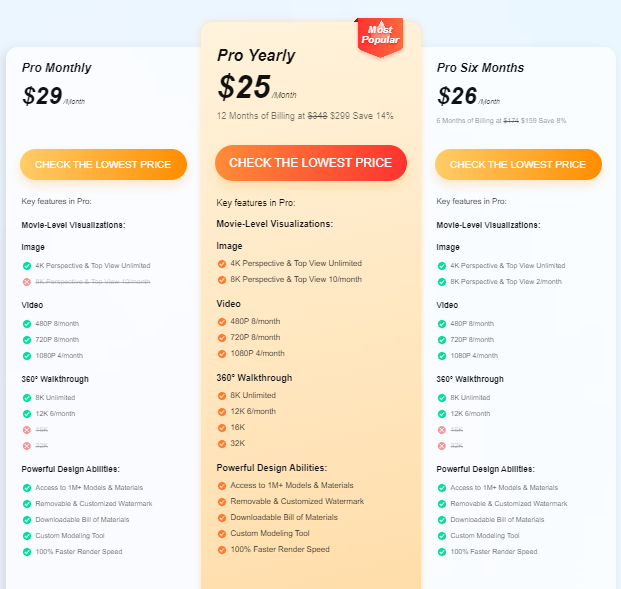Let’s discuss Coohom Reviews (2024).
Coohom Reviews (2024)

Introduction: Coohom Reviews
Welcome to our comprehensive guide and review of Coohom, a powerful tool in the world of interior design and architectural visualization. Whether you’re an experienced designer or just starting out, Coohom offers innovative features to enhance your creative process.
In this article, we’ll delve into what Coohom is, explore its key features, discuss pricing, compare it with other tools, and answer common questions. Let’s begin our journey through the world of Coohom!
What Is Coohom?
Coohom is a cutting-edge cloud-based platform designed to revolutionize interior design and architectural visualization. Let’s explore its key aspects:
Overview:
- Purpose: Coohom serves as a versatile tool for professionals, homeowners, and real estate agents to create stunning visual representations of spaces.
- User-Friendly Interface: Coohom boasts an intuitive interface, making it accessible even to beginners.
Core Features:
-
2D/3D Floor Planning:
- Coohom allows users to swiftly draw floor plans in both 2D and 3D formats.
- Designers can visualize room layouts, furniture placement, and spatial arrangements effortlessly.
-
KooRender Engine:
- The heart of Coohom lies in its powerful rendering engine, KooRender.
- KooRender generates high-quality, photorealistic 3D renderings within seconds.
- Users can showcase their designs with stunning visuals, helping clients envision the final result.
-
Drag-and-Drop Elements:
- Coohom simplifies the design process by enabling users to drag and drop various elements.
- Furniture, fixtures, appliances, and decor items can be seamlessly added to the virtual space.
- Realistic room scenes come together effortlessly.
Key Features of Coohom
Let’s dive deeper into the essential features that make Coohom a standout tool for interior design and visualization:
1. 2D/3D Floor Planning:
- Coohom’s floor planning capabilities allow users to create detailed layouts in both 2D and 3D.
- 2D Floor Plans: Designers can sketch out room dimensions, wall placements, and furniture arrangements.
- 3D Visualization: Coohom transforms these 2D plans into immersive 3D models, providing a realistic view of the space.
- Whether you’re planning a home renovation or designing a commercial space, Coohom simplifies the process.
2. KooRender Engine:
- Coohom’s rendering engine, known as KooRender, is a game-changer.
- Lightning-Fast Rendering: KooRender generates high-quality, photorealistic renderings within seconds.
- Realistic Visualizations: Architects, interior designers, and real estate professionals can showcase their concepts with stunning visuals.
- Say goodbye to long rendering times; Coohom delivers efficiency without compromising quality.
3. Drag-and-Drop Elements:
- Coohom understands that design should be intuitive.
- Furniture and Decor: Users can easily drag and drop furniture, lighting fixtures, appliances, and decor items into their virtual spaces.
- Customization: Experiment with different layouts, color schemes, and styles by rearranging elements effortlessly.
- Coohom’s library of objects ensures that your designs come to life seamlessly.

Coohom Pricing
Understanding the pricing structure of Coohom is essential for users considering this powerful design tool. Let’s break it down:
Free Trial:
- Coohom offers a free trial period, allowing users to explore its features without any financial commitment.
- During the trial, you can test out the platform, create designs, and experience the rendering capabilities.
Subscription Plans:
- After the trial, users can choose from various subscription plans based on their needs:
- Basic Plan: This entry-level plan provides essential features and limited access to the object library.
- Pro Plan: For more advanced users, the Pro Plan unlocks additional features, including an expanded object database and priority support.
- Enterprise Plan: Tailored for professionals and businesses, this plan offers custom solutions, collaboration tools, and enhanced rendering options.
Pricing Comparison:
- Coohom’s pricing is competitive compared to other design software.
- Consider your budget, project requirements, and the level of detail you need when selecting a plan.
Coohom Alternatives
While Coohom offers impressive features, it’s essential to explore other tools in the market. Let’s take a look at some alternatives:
1. SketchUp:
- Overview: SketchUp is a popular 3D modeling software widely used by architects, designers, and hobbyists.
- Strengths:
- Versatility: SketchUp allows detailed 3D modeling, including architectural designs, furniture, and landscapes.
- Extensive Community: A large user base means abundant tutorials, plugins, and resources.
- Integration: SketchUp integrates seamlessly with other design software.
- Considerations:
- Learning Curve: While user-friendly, mastering SketchUp may take time.
- Rendering: Basic rendering capabilities; additional plugins required for photorealistic results.
2. Blender:
- Overview: Blender is an open-source 3D creation suite with powerful modeling, animation, and rendering tools.
- Strengths:
- Free and Open Source: Blender is free to use and constantly evolving.
- Advanced Features: Rigging, animation, and physics simulations are robust.
- Community Support: Active forums and tutorials.
- Considerations:
- Complexity: Blender’s interface can be overwhelming for beginners.
- Learning Curve: Requires dedication to explore its full potential.
3. Sweet Home 3D:
- Overview: Sweet Home 3D focuses on interior design and floor planning.
- Strengths:
- User-Friendly: Intuitive interface for creating floor plans and visualizing interiors.
- Furniture Library: Extensive collection of furniture and decor items.
- Cross-Platform: Available for Windows, macOS, and Linux.
- Considerations:
- Limited Rendering: Basic rendering capabilities; not suitable for high-end visualizations.
- Simplicity: May lack advanced features needed by professionals.
4. Coohom vs. Alternatives:
- Coohom vs. SketchUp: Coohom excels in quick rendering and ease of use, while SketchUp offers more versatility and a mature plugin ecosystem.
- Coohom vs. Blender: Coohom is user-friendly but lacks Blender’s advanced animation and simulation features.
- Coohom vs. Sweet Home 3D: Coohom provides better rendering, but Sweet Home 3D is simpler for basic floor planning.
Coohom vs SketchUp
Let’s compare Coohom and SketchUp, two prominent tools in the world of design and visualization:
1. Coohom:
- Strengths:
- Quick Rendering: Coohom’s KooRender engine generates realistic 3D renderings rapidly.
- User-Friendly: Intuitive interface suitable for beginners and professionals alike.
- Cloud-Based: Coohom’s cloud architecture ensures accessibility from anywhere.
- Considerations:
- Object Database: While extensive, some popular items (e.g., Ikea furniture) may be missing.
- UI Refinement: Coohom’s interface could benefit from further refinement.
- Auto-Narrated Tutorials: YouTube tutorials may lack human narration.
2. SketchUp:
- Overview: SketchUp is a versatile 3D modeling software.
- Strengths:
- Versatility: SketchUp allows detailed modeling of architecture, furniture, and landscapes.
- Community Support: A large user base provides tutorials, plugins, and resources.
- Integration: Seamless integration with other design tools.
- Considerations:
- Learning Curve: While user-friendly, mastering SketchUp takes time.
- Rendering: Basic rendering capabilities; additional plugins needed for photorealism.
Which One to Choose?
- Coohom: Opt for Coohom if you prioritize quick rendering, ease of use, and cloud-based convenience.
- SketchUp: Choose SketchUp if you need versatility, a mature plugin ecosystem, and more complex modeling capabilities.
Coohom System Requirements
Before diving into the world of Coohom, let’s ensure your system meets the necessary requirements for a seamless experience:
Hardware Requirements:
- Processor: A multi-core processor (Intel Core i5 or equivalent) is recommended for smooth performance.
- RAM: At least 8 GB of RAM is essential for handling complex designs and rendering tasks.
- Graphics Card: A dedicated graphics card (NVIDIA GeForce GTX 1050 or higher) with 2 GB VRAM ensures optimal rendering speed.
- Storage: Coohom relies on cloud storage, but having sufficient local storage (SSD preferred) for project files is advisable.
Software Requirements:
- Operating System: Coohom is compatible with Windows, macOS, and Linux.
- Web Browser: The latest versions of Google Chrome, Mozilla Firefox, or Safari are recommended for accessing Coohom’s web interface.
- Internet Connection: A stable internet connection is crucial, especially for rendering and cloud-based features.
Additional Considerations:
- Screen Resolution: A higher screen resolution (Full HD or higher) enhances the visual experience.
- Mouse or Stylus: A precise input device (mouse or stylus) is essential for accurate design work.
- External Monitor: If you’re working on detailed projects, consider using an external monitor for additional screen real estate.
Remember to check for any Coohom updates or specific requirements based on your chosen subscription plan. Now that you’re equipped with the system essentials, let’s move forward!
FAQs
Let’s address some common questions about Coohom:
1. Can I Use Coohom for Free?
- Coohom offers a free trial period, allowing users to explore its features without any financial commitment.
- After the trial, you can choose from various subscription plans based on your needs.
2. Which Is Better: SketchUp or Coohom?
- Both tools have their strengths:
- Coohom: Quick rendering, ease of use, and cloud-based convenience.
- SketchUp: Versatility, mature plugin ecosystem, and more complex modeling capabilities.
- Consider your specific requirements and workflow when making a choice.
3. What Is Coohom Software?
- Coohom is a cloud-based platform for interior design and architectural visualization.
- It allows users to create 2D/3D floor plans, render realistic scenes, and experiment with furniture placement.
4. Does Coohom Have an App?
- Coohom primarily operates through its web interface. However, there isn’t a dedicated mobile app at the moment.
5. Can I Earn from Coohom?
- Coohom doesn’t directly provide an earning platform. However, professionals can use it to showcase their designs and attract clients.
6. Can I Use Coohom Offline?
- Coohom relies on cloud-based services, so an internet connection is necessary for most features.
- Offline usage is limited to accessing saved projects.
7. Can I Import SketchUp into Coohom?
- Coohom doesn’t directly import SketchUp files. However, you can recreate your designs within Coohom using its features.
8. How Do You Draw a Wall in Coohom?
- In Coohom, drawing walls is straightforward:
- Select the wall tool.
- Click to set the starting point.
- Drag to create the wall.
- Adjust dimensions and angles as needed.
9. Which Software Is Best for Building Design?
- Coohom is excellent for visualizing interior spaces.
- For comprehensive building design, consider tools like SketchUp, AutoCAD, or Revit.
10. Coohom Discount Code (if Available)
- Check Coohom’s official website or promotional emails for any ongoing discounts or coupon codes.
Conclusion
In this comprehensive guide and review, we’ve explored the world of Coohom, a dynamic platform for interior design and architectural visualization. Let’s recap our journey:
-
Introduction:
- Coohom’s relevance in the design industry.
- Our purpose: to provide an in-depth guide and review.
-
What Is Coohom?:
- Coohom’s cloud-based nature and user-friendly interface.
- Core features: 2D/3D floor planning, KooRender engine, and drag-and-drop elements.
-
Key Features of Coohom:
- Detailed exploration of 2D/3D floor planning and KooRender.
- How Coohom simplifies design workflows.
-
Coohom Pricing:
- Free trial availability.
- Subscription plans: Basic, Pro, and Enterprise.
-
Coohom Alternatives:
- Comparison with SketchUp, Blender, and Sweet Home 3D.
- Choosing the right tool for your needs.
-
Coohom vs SketchUp:
- Strengths and considerations for both tools.
- Making an informed choice.
-
Coohom System Requirements:
- Hardware and software prerequisites.
- Ensuring a smooth Coohom experience.
-
FAQs:
- Addressing common queries about Coohom.
- Tips for using Coohom effectively.
Now that you’re equipped with knowledge about Coohom, go forth and create stunning designs! Whether you’re an interior designer, architect, or homeowner, Coohom awaits your creative touch.
Check Best AI Tools for Small Business
–>Get Professional Hosting for low as $2.99/month +Free domain, to host upto 30 websites. Get 20% discount using this special link: “Hostinger 20% OFF“ <–
Newsletter!
Are you not yet subscribed to our free Newsletter?
Subscribe below to get the latest trends sent to you email every week!
